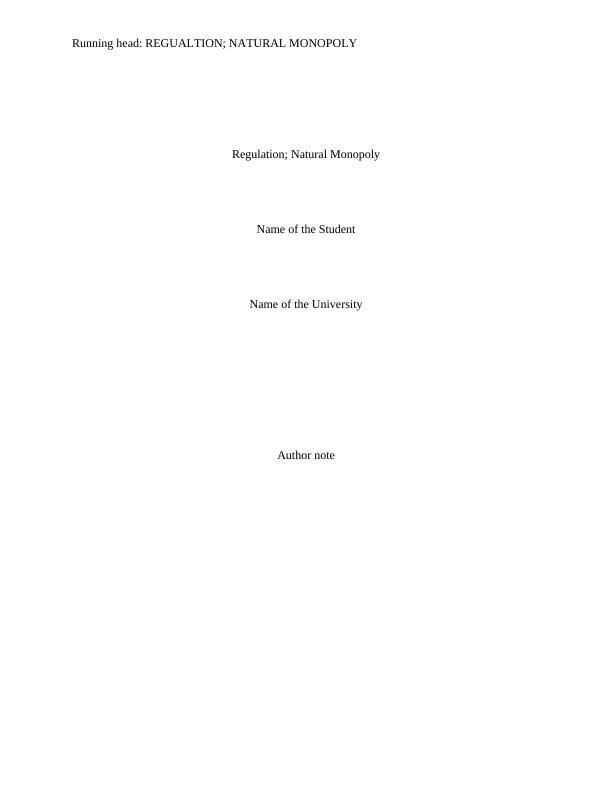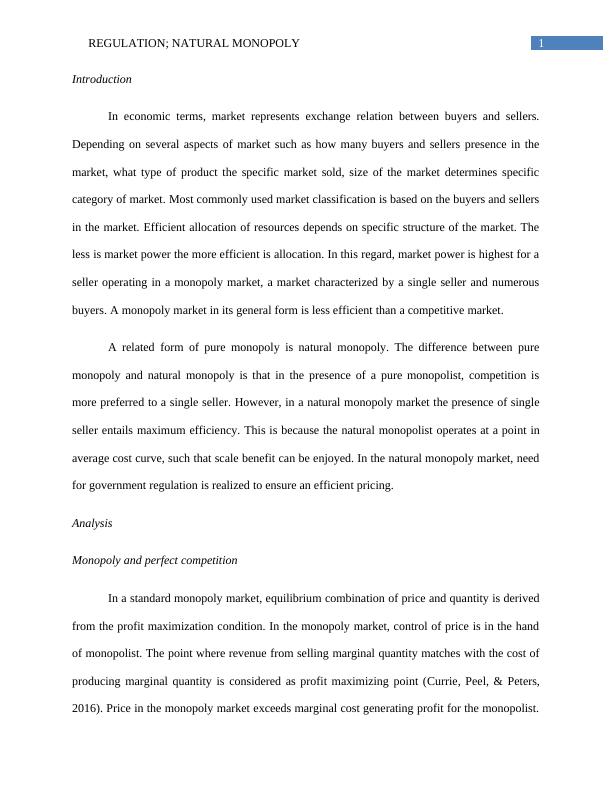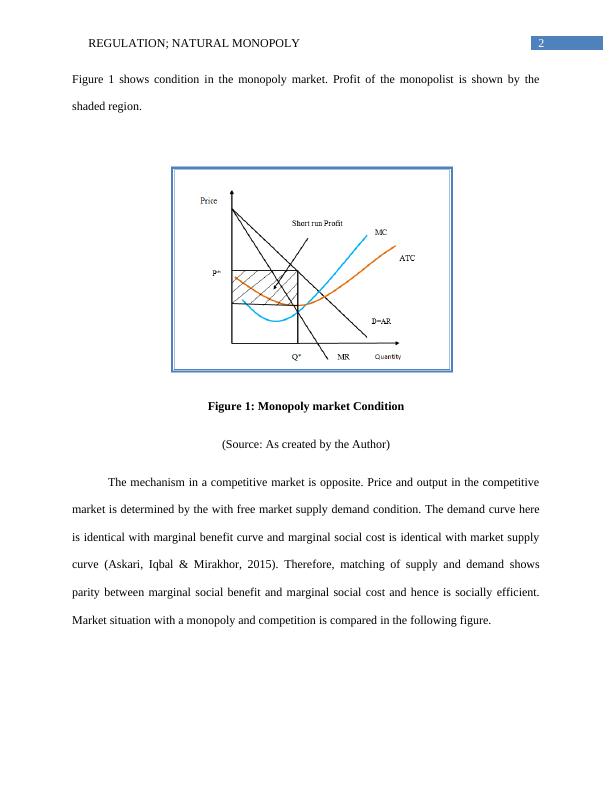Regulating Natural Monopolies Principles of Economics
12 Pages2771 Words130 Views
Added on 2020-02-24
Regulating Natural Monopolies Principles of Economics
Added on 2020-02-24
ShareRelated Documents
End of preview
Want to access all the pages? Upload your documents or become a member.
Business Economics: Assignment
|12
|2934
|39
ECO511 - Economics for Business || Assignment
|12
|2771
|136
Monopoly Power and Market Failure: A Case Study of Qantas
|11
|2374
|182
Monopoly Market Assignment Project
|11
|2776
|58
Microeconomics Questions and Answers 2022
|12
|1803
|41
Market Structure of Australia: Monopoly and Monopolistic Competition
|12
|2949
|341




